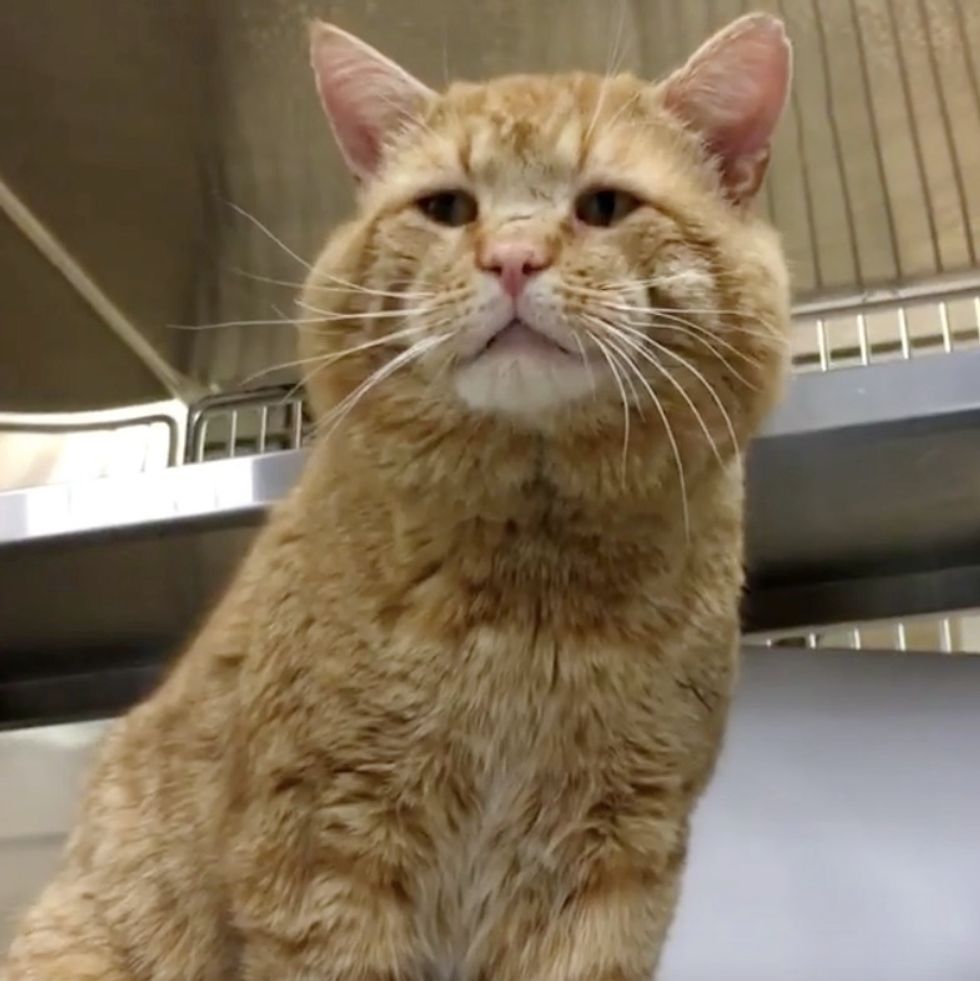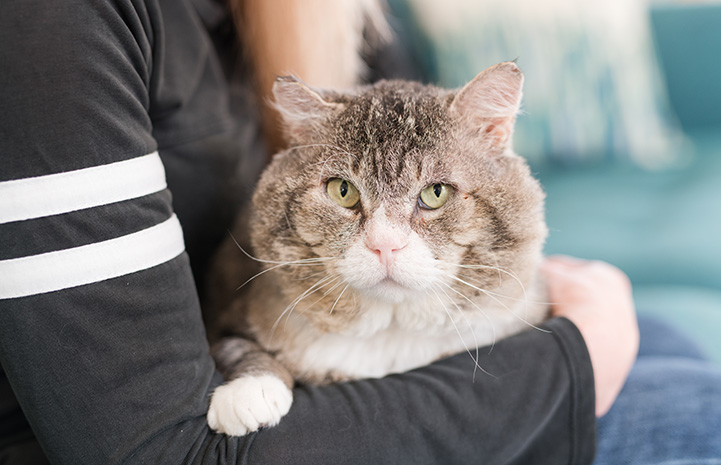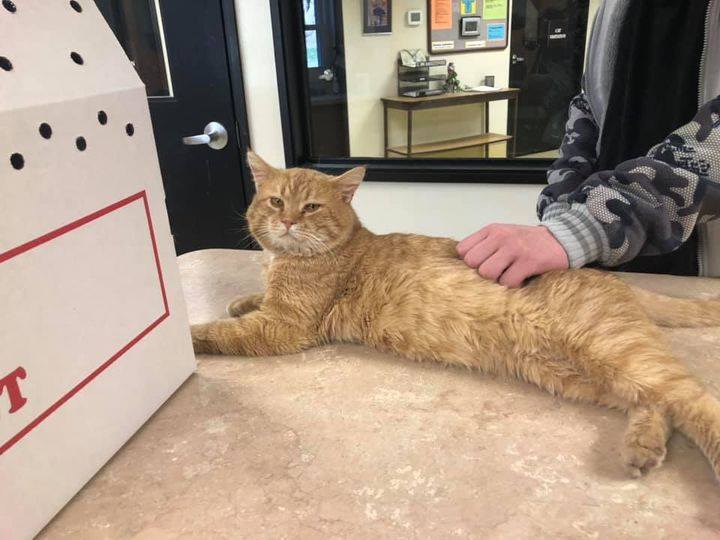Most tomcats have one main interesting feature: Chubby cheeks.
Ideally, the cheeks are a form of fat storage, to help the tomcat to stay well-fed during lean times and also to keep him warm. But is that all there is to it?
Well, a tomcat’s jowls can mean lots of other things, including the need for medical attention. That’s because they are often caused by obesity.
But don’t get worried just yet. Let’s investigate this interesting topic and you will know everything you need to know about taking good care of your feline friend when he gets jowls.
Let’s jump right in!
What Are Tomcat Jowls?

Tomcat jowls are the loose, saggy skin that hangs down from a cat’s jawline.
This excess skin can make a cat look like she has double chins, and it’s a common sign of aging in cats.
Jowls are typically caused by a combination of genetics and lifestyle factors. For instance, tomcats who are overweight or obese are more likely to develop jowls due to the added weight and skin fold in the area.
Similarly, those with a family history of jowls may be more likely to develop them as well.
As the cat grows older, they will start losing muscle in the face and neck and they will also get more lethargic, which means they will also gain weight.
A combination of these two factors will make them develop jowls.
At What Age Do Tomcats Get Jowls?
Cats hit puberty at around 6-12 months and this is the age at which jowls will start appearing in tomcats.
So, if you have a young cat, you might want to start getting used to the idea of those chubby cheeks!
That said, it is possible for some tomcats to never develop jowls, even into old age.
It is also possible for younger cats to develop jowls although that might indicate a health issue. In such a scenario, consult with your vet just to be sure all is well.
Do All Tomcats Develop Jowls?
No, not all tomcats will develop jowls as they age. Jowls are most commonly seen in purebred tomcats, although any male cat can develop them.
They are more likely to form in overweight or obese cats, as the extra skin and fatty tissue can sag and droop over time.
Certain breeds of cats are also more prone to developing jowls, such as Persians and Exotics.
Do Tomcat Jowls Go Away?

Jowls typically start to appear when a cat reaches puberty, which is around six to nine months of age, and continue to grow until he’s around two years old.
After that, they usually remain the same size, although they may fluctuate somewhat depending on the cat’s testosterone levels.
While some owners don’t mind their cat’s jowls, others find them unsightly and opt to have them removed. This can be done through a surgical procedure called jowl liposuction, which is relatively quick and easy to recover from.
However, it’s important to note that jowls will usually return if the cat isn’t castrated, so this isn’t a permanent solution.
If you’re not keen on the idea of surgery, there are a few things you can do to help manage your cat’s jowls.
Regular grooming with a bristle brush or comb can help to remove any dead hair and keep the area clean and free of mats.
You can also try using an anti-inflammatory shampoo on your cat’s jowls if they seem to be getting irritated.
How Can I Prevent Tomcat Jowls?
There is no guaranteed way to prevent tomcat jowls, but there are some things you can do to help your cat stay looking his best as he ages.
Keeping your cat at a healthy weight is one of the most important things you can do to minimize the appearance of jowls.
Regular exercise and a healthy diet will help to keep your cat’s muscles toned and his skin tight.
In addition, regular grooming can help to keep your cat’s skin and coat looking healthy.
Brush your cat regularly to stimulate blood circulation and help distribute natural oils through his fur.
You can also try giving your cat occasional facials with a warm, damp cloth to help keep his skin looking supple.
Neutered Vs Unneutered Male Cat Jowls

Unneutered male cats typically have larger, more pronounced jowls than neutered cats.
This is because unneutered males produce more testosterone, which can increase the muscles and tissues in the face, including the jowls.
Neutered male cats may have less pronounced jowls due to lower levels of testosterone.
However, all cats, regardless of their gender or whether they are neutered or not, can have jowls that vary in size and prominence.
So, if you’re wondering whether your cat’s jowls are normal, the answer is probably yes!
Do Cats Lose Their Jowls After Neutering?
Neutering will bring down testosterone levels and this will reduce the size of their jowls.
However, the jowls are a part of the cat’s anatomy and are not affected by the neutering procedure.
Cats may have loose skin on their necks after neutering due to the loss of body fat, but the jowls themselves will not completely disappear.
Related Post: Can A Neutered Cat Get Erect?
Conclusion
While tomcat jowls may not be to everyone’s taste, there’s no need to worry if your cat has them.
They are usually harmless and do not cause any health problems.
Just make sure to groom your cat regularly and also give them lots of exercise and a good diet and your feline friend will be fine.

Hi! I am Eleanor Price. I started this website after my cat, Louie, almost died from a case of botulism (a type of food poisoning often caused by bacteria that grow on food items). Turned out that my cat’s diet was the problem. I have made it my duty to provide the best information and recommendations about everything cat lovers need to know about their felines’ health and wellbeing. My goal is to find the most informative content on anything feline-related and share it with fellow hardworking kitty lovers.

